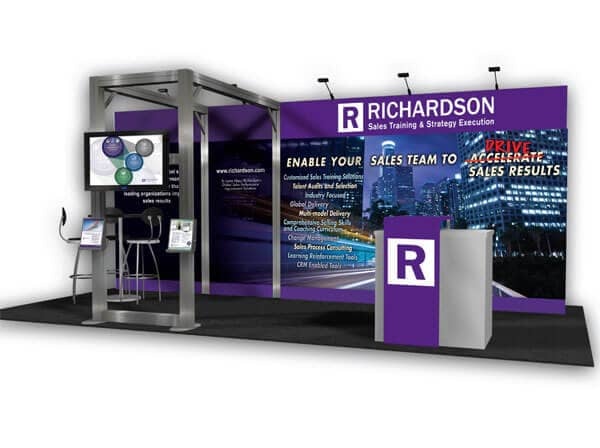Six Tips to Leverage Trade Shows as a Sales Prospecting Tool

Spring means trade show season, and it’s time to take them seriously. Trade shows fall in and out of fashion as a marketing and sales prospecting tool. But, whether you love them or hate them, it makes good business sense to recognize the significant level of financial, human and time resources allocated to putting on and participating in a successful trade show.
In today’s cool digital marketing and sales world, trade shows aren’t the latest and shiniest tool in the box. Still, trade shows can be an extremely effective marketing and sales prospecting tool. It is precisely because of today’s digital marketing and sales environment that, to differentiate yourself, you need to seize and leverage every opportunity to meet with prospects and clients in person — and trade shows are the perfect tool to do so.
Here are six sales prospecting skills you can leverage at trade shows:
1) Marketing and sales alignment — Don’t treat trade shows as a marketing event that requires sales to “show up and work the floor.” To be effective, marketing and sales must work together to develop a strategy and tactical plan on what they jointly want to accomplish. Even better, the two groups should create and sign a joint Service Level Agreement (SLA) prior to the show so that each can be held accountable by the other. The SLA should cover elements such as the following:
- Overall goals, objectives and budget of the show
- Personnel coverage model throughout the show
- Targeted audience (pre-show registration lists are helpful here) and how to meet those targets. Don’t just wait for prospects to come to your booth. Make sure to draw people there before the event by engaging them through LinkedIn or other social media tools, specifically inviting them to visit.
- Which networking events your company should attend and how you engage prospects there
- Themes, messaging, communication and sponsorship tools to develop and deploy, both prior to and after the event
- Expectations of the attending personnel: what to wear, when to show up, what information to gather and any reporting documents to complete
- How leads will be allocated, followed up on and nurtured. At Richardson Sales Performance, we recommended a lead-scoring system that assigns A, B, C and D levels of leads. “A” leads go to the appropriate sales rep, “B” to inside sales, “C” to be nurtured by marketing, and “D” to be discarded.
3) Don’t Pounce — Some booth reps can act too aggressive, pouncing on people as soon as they step near the booth. Traffic flow at shows naturally comes in waves, and this can lead to frustration by those who want to engage visitors and help drive leads. Make sure that you control the pounce factor of your booth representatives. You want your team to be outgoing, but you don’t want to risk scaring people away.
4) Develop an integrated prospecting plan — Don’t just show up at a trade show and expect attendees to stop by your booth. Your teams need to develop pre-show communication plans that drive people to find your booth. There are many good tools to leverage, from LinkedIn and Twitter to e-mail and direct mail. You can be creative by adding booth or show attractions, but the key is to communicate prior to the event. Just because you build the booth does not mean they will come.
5) Follow-up, follow-up, follow-up — One thing to remember after a trade show is that attendees may have visited 50 booths and will have 50 people following up with them. It’s critical to maintain the course and follow-up consistently after the show. You might try a memorable booth giveaway or contest so that you have something concrete to leverage in your post-show messaging strategy.
6) Track effectiveness — Code all leads prior to inputting them into your CRM system. The goal is to track a waterfall of your sales pipeline, looking at responders (booth visitors or those who left or scanned a business card), qualified leads, opportunities, won opportunities and lost opportunities. Depending on your sales cycle, marketing and sales should, at the very least, develop a monthly review cadence of how the leads are flowing into your system. When all of the leads are closed out, schedule a final joint review meeting to evaluate the effectiveness of the show. Look at what went right and identify areas of improvement for the next show.
Trade shows can still be a great marketing and sales prospecting tool, even in today’s digital age. Correction: especially in today’s digital age.
The key to effectiveness is focus: on your messaging, on your prospects, on engaging and not scaring away people who visit your booth. Sales and marketing must work together effectively and leverage the myriad communication tools available to drive awareness and build show booth traffic … and interest in your company.

Brief: Creating a Targeted Prospecting Strategy
DownloadGet industry insights and stay up to date, subscribe to our newsletter.
Joining our community gives you access to weekly thought leadership to help guide your planning for a training initiative, inform your sales strategy, and most importantly, improve your team's performance.






